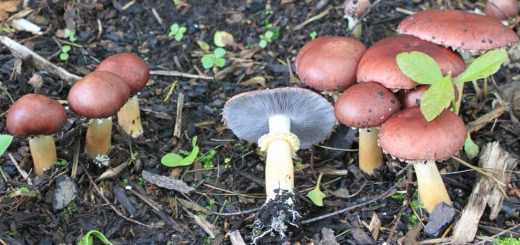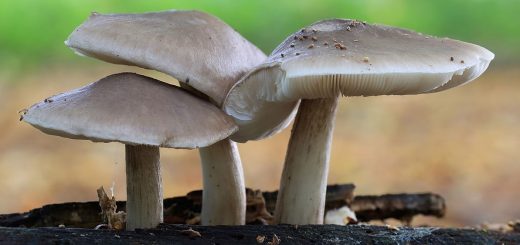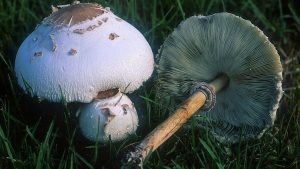#037: Mushroom Morphology: Earth Tongue Look-Alikes
The earth tongue look-alikes include a myriad of mushroom-forming ascomycetes that do not look like cups, morels, false morels, elfin saddles, or truffles. These mushrooms have a stipe and a variously-shaped head. The heads can be bulb-shaped to club-shaped to paddle/spatula-shaped and may be lobed. These mushrooms are for the most part unbranched, which sets them apart from the basidiomycete corals. A few earth tongue look-alikes, like the Candlesnuff Fungus (Xylaria spp.) have minimal branching. What sets the earth tongue look-alikes apart from the basidiomycete corals and clubs is that the earth tongue look-alikes have a clearly-defined, sterile stipe. The clubs and corals tend to produce spores all over the fruiting body. However, in some earth tongues look-alikes, like the Dead Man’s Fingers (Xylaria polymorpha), the stipe is not very well defined. That being the case, the earth tongue look-alikes are often lumped together with the corals and clubs. If you have a microscope available, you can look at a slice of fertile tissue to see if the spores are carried by asci (as in earth tongue look-alikes) or by basidia (as in corals and clubs). See FFF#012 and #013 for more on asci and basidia.
Because of the variety in head shapes among the earth tongue look-alikes, I will describe a number of examples so you can get a feel for the diversity in the group. It may help to do a quick image search for each example. Dead Man’s Fingers (Xylaria polymorpha) are medium-sized club- or finger-shaped mushrooms with a large head and very little stipe (see FFF#005 for more). A related species, the Candlesnuff Fungus (Xylaria spp.), produces mushrooms that are thin, minimally branched structures with white, powdery spores covering the tips. Spathulariopsis velutipes is a distinctive mushroom that looks like a spatula or paddle. The brown stipe extends up into the middle of the tan, flat, teardrop-shaped head, making it look like a kitchen utensil. Cordyceps militaris produces a club-shaped to roughly cylindrical (usually somewhat twisted) fruiting body. The fertile surface on the top of the stipe is finely pimply. When you find any Cordyceps species, it is important to dig up its insect host along with the mushrooms. Leotia lubrica produces odd-looking mushrooms known as Jelly Babies. The yellowish to tan stipe supports a darker head. Unlike most other earth tongue look-alikes, the Jelly Baby’s smooth, slimy head is attached only at the top of the stipe. The head is convex and inrolled, so it curves in and hides the tip of the stipe.
It is not surprising that the earth tongue look-alikes form a polyphyletic gorup, since it includes every mushroom-forming ascomycete that does not fit into the other morphological groups. These fungi are found in a variety of orders and families within the classes Leotiomycetes and Sordariomycetes, both of which belong to the Phylum Ascomycota. Because many of the earth tongue look-alikes are not closely related to each other, the ecological and genetic characteristics of this group cannot be discussed coherently.
See Further:
http://www.mushroomexpert.com/clubscorals.html (look through the links for info on relevant mushrooms)
http://www.mushroomexpert.com/oddballs.html (again, look for the relevant links)
http://www.mushroomexpert.com/taxonomy.html
Miller and Miller, “North American Mushrooms…” (sorry, the section on earth tongues and look-alikes is not available online)








![#011: Characteristics of Kingdom Fungi [Archived]](https://www.fungusfactfriday.com/wp-content/themes/hueman/assets/front/img/thumb-small-empty.png)


2 Responses
[…] Basidiomycota. For clavarioid mushrooms in the Phylum Ascomycota, see FFF#036 (Earth Tongues) and FFF#037 (Earth Tongue Look-Alikes). Unlike the earth tongues and look-alikes, the corals and clubs […]
[…] ophioglossoides is a small mushroom that belongs to the earth tongue look-alikes (ETLAs, FFF#037) morphological group. Like other ETLAs, the Golden Thread Cordyceps has two regions on its fruiting […]